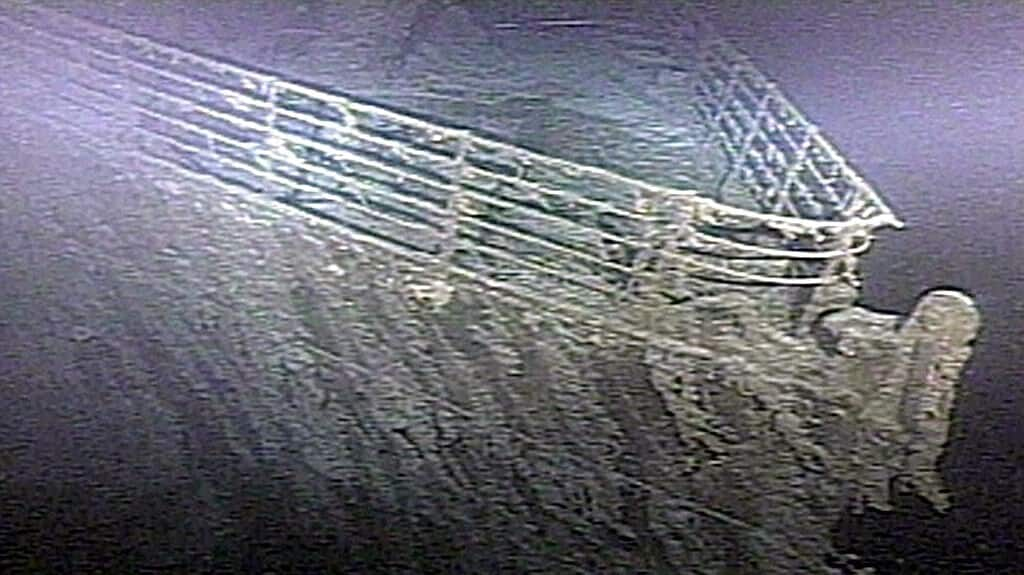
The Titanic is distintegrating: How the wreck will decay
What's the story
The RMS Titanic, now resting on the ocean floor for over 112 years, is showing significant signs of decay. The 883ft (269m) vessel, which tragically sank in April 1912, broke apart as it descended nearly 12,500ft (3.8km) to the seabed. The disaster claimed the lives of more than 1,500 passengers and crew. Experts now question what the final fate of this historic wreck will be as it continues to deteriorate in the deep ocean's crushing darkness.
Discovery
Steady decline of Titanic's wreck
The Titanic's wreck, largely undisturbed except for infrequent visits by deep-sea submersibles and occasional salvage missions retrieving small artifacts, has been steadily decaying over the years. Recent images from an expedition to the site, located nearly 640km southeast of Newfoundland, have highlighted the ongoing deterioration of the once-majestic vessel as it succumbs to the relentless forces of the deep ocean. The RMS Titanic sank on its maiden voyage in 1912 after hitting an iceberg, resulting in over 1,500 deaths.
Future implications
Ship's decline altering surrounding ocean
Since the Titanic's wreck was discovered in 1985, its bow, with iconic railings, has been a haunting symbol of the disaster. However, by 2022, scans revealed the railings beginning to buckle, and a 2024 visit confirmed a significant section has now collapsed. This striking visual marks how the harsh ocean environment, with immense pressure, strong currents, and iron-eating bacteria, is steadily breaking apart the legendary ship. Surprisingly, this deterioration is also influencing the surrounding ocean habitat in unexpected ways.
Water pressure
Ship's weight accelerating decay
On the ocean floor, the Titanic faces immense water pressure, around 40 MPa—390 times greater than at the surface. With no remaining air pockets, further catastrophic implosions are unlikely. However, the ship's own 52,000-tonne weight is accelerating its decay. As it settles into the seabed, twisting forces are tearing the steel hull apart, causing large cracks and fissures. Submersible missions have observed these fractures and the collapse of decking areas as the structure gradually disintegrates.
Steel structure
How corrosion process differs in seawater
Like any steel structure, the Titanic is rusting, but under 2.4 miles (3.8km) of seawater, the corrosion process differs from that on land. Instead of oxygen and water producing iron oxide, bacteria are primarily responsible. The wreck is enveloped in a biofilm—a living layer of bacteria, marine fungi, and other microbes—that is feeding on the ship. Initially, organic materials like upholstery, pillows, and furniture provided abundant nutrients, attracting microbes that settled and began the process of decay.
Iron oxidized
Microbes colonizing the Titanic
Over time, more extreme microbes have colonized the Titanic, possibly introduced when the wreck hit the sea floor or drifting from hydrothermal vents on the mid-Atlantic ridge. These include bacteria that oxidize iron and others that produce acid, both of which are eroding the metal surfaces. Additionally, microbes that feed on the resulting rust have been thriving on the wreck, further accelerating its decay.
Surface currents
Deterioration speeding up due to underwater currents
Meanwhile, the wreck's deterioration could be hastened by other factors, such as underwater currents in the deep ocean. While not as strong as surface currents, these deep currents involve large volumes of water and can be driven by surface winds, deep water tides, or thermohaline currents—caused by differences in water density from temperature and salinity. Additionally, benthic storms, rare events often linked to surface eddies, can generate powerful, sporadic currents that may dislodge material on the seabed.
Iron oxide stain
The final fate of Titanic
The ultimate fate of the Titanic appears to be a modest iron oxide stain on the sea floor, marked by scattered tiles, toilets, and brass fittings. Anthony El-Khouri, a microbiologist at the Eastern Florida State College notes that porcelain items, such as the colorful tiles from the Turkish Baths made of fired silica, will likely persist nearly indefinitely.